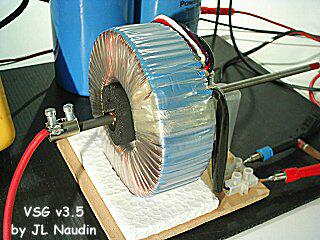
Tests
and Video demonstration of the VSG v3.5
created on March 7, 2005 - JLN
Labs - Last update March 12, 2005
Toutes les
informations et schémas sont publiés gratuitement ( freeware )
et sont destinés à un usage personnel et non commercial
All informations and
diagrams are published freely (freeware) and are intended for a private use and a non commercial
use.
This version v3.5 of
the VSG use a 6 mm diameter and 60 mm length pure
carbon rod and a 6 mm
diamter Thoriated Tungsten rod (loaded with 2.20% of ThO2).
A such electrode (WT20) is commonly used for TIG and Plasma
welding and I have alredy used it previously in the High
Temperature Plasma Electrolysis experiment (CFR
project). A solenoid coil
is tightly wound around the carbon rod, this coil produces a
colinear and continuous (DC) magnetic field inside the carbone
rod, its purpose is to align the spins of the carbon atoms with
the main electric field. The measured B-Field with a Gaussmeter
is about 135 gauss. To get a true Synergetic effect, the required
nuclear reaction is :

If few carbon atoms
are able to interact in this nuclear process (1st reaction), a
superimposed current is produced by the b
radiations during the reconstitution of carbon from boron 12 (2nd
reaction) while a large amount of vacuum energy is tapped.
To measure the
additional current flow in the carbon, the apparatus is placed in
the main axis of a large toroid coil used as the secundary of the
VSG transformer while the carbon rod acts as its primary. Two 80
000 µF capacitors are connected in parallel and charged at 37
Volts, then, these two capacitors are discharged through the
carbon rod with a High Power MosFet electronic switching unit.
During the discharge sequence The current flow in the carbon rod
during the discharge sequence is measured with a toroid
transformer (1143:1) loaded with a 881 ohms resistor (Rload). All
the datas are recorded in real time with the digital oscilloscope Fluke 123.. The resistance of the carbon rod have
been measured with the 4 wires method.
Two tests have been
conducted and fully recorded on a video for demonstration
purposes, you will find the video of these tests at the end of this page.
Test
one : The solenoid coil is
not powered (B-Field = 0), the capacitors are discharged through
the carbon rod. The voltage is recorded with the digital scope,
then the datas are stored in a computer for calculations.
Test
two : The solenoid coil is
switched on (B-Field = 135 gauss) few second before the firing
sequence. The capacitors are discharged through the carbon rod.
The voltage is recorded again with the digital scope, then the
datas are compared to the previous one.
Expected
results : If a significant
change in the measured voltage between the 'test one'
and the 'test two' can be detected, this can be only
explained by the presence of an additional current flow in the
carbon produced by the b radiations.
In the case of carbon,
with a coefficient of effectiveness of 10-5
(1 atom out of 100.000 entering into reaction) and a total output
of 20%, the reconstitution of carbon from boron 12 would provide
8 kw per gram of carbon used.
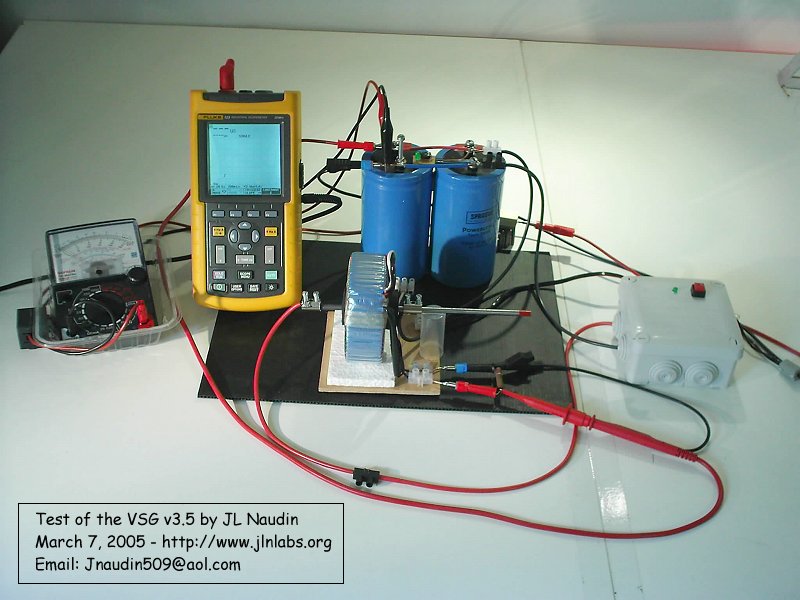
Above : the VSG v3.5 testing setup.
Below : the voltage measured across the Rload resistor
connected at the output of the toroid transformer.
When the continuous and colinear B-Field is active, the current
flow in the carbon rod increases significantly.
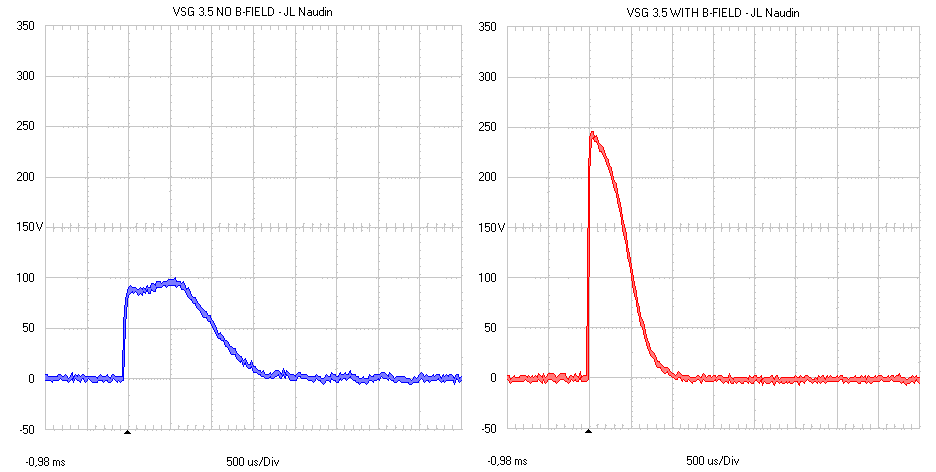
The recorded datas about these tests can be seen here
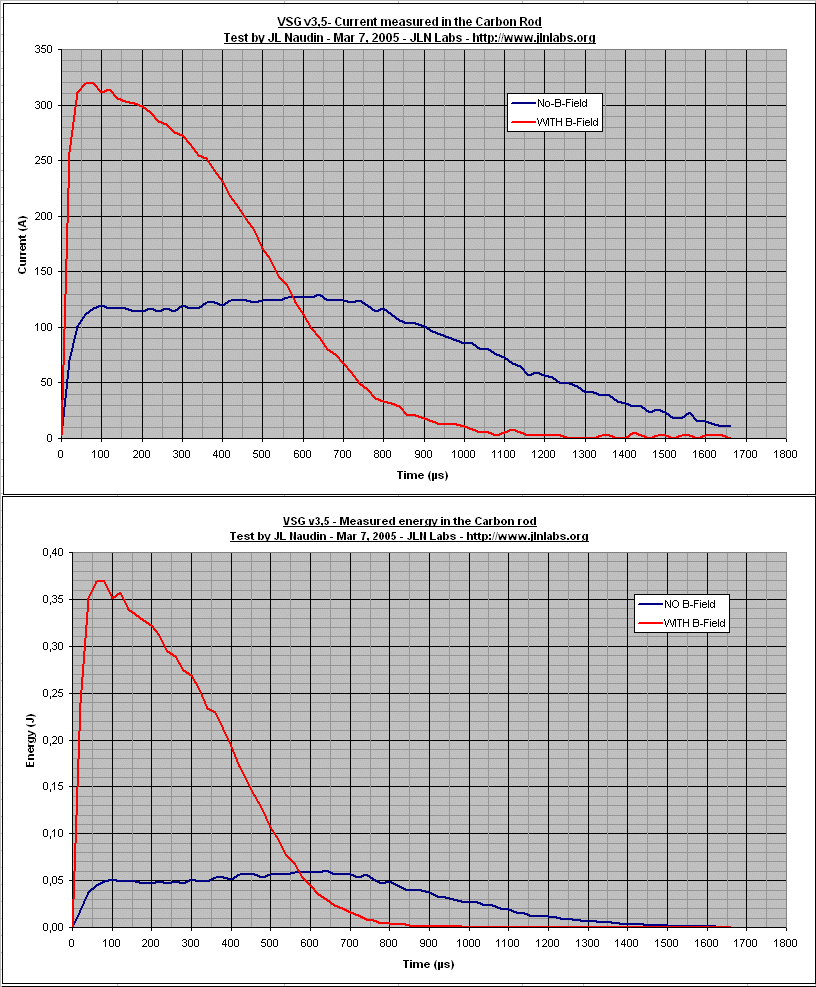

Video demonstration of the VSG
v3.5 tests
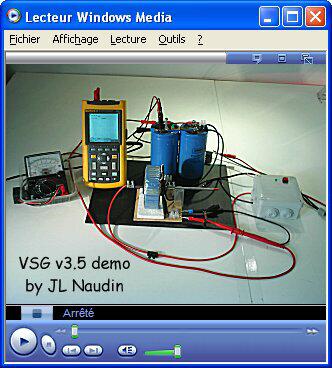
Click on
the picture to see the demo in Windows Media format (2.86 Mb)
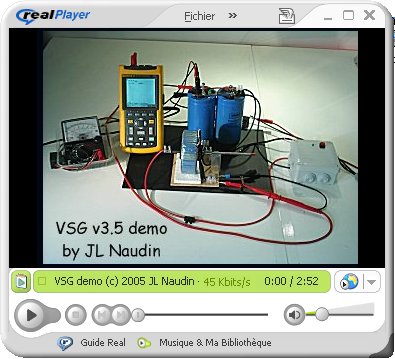
Click on the picture to see the demo in Real
format
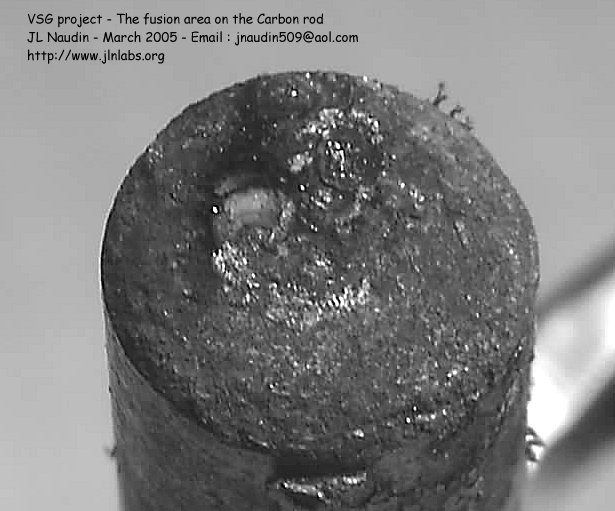

This
photo shows EVs strikes on the surface of the Th-loaded Tungsten
rod initiated with only 37 V DC (VSG v3.5)
It is important to notice that the fusion temperature of the
Tungsten is 3680°K
 WARNING, USE
CAUTION ! This
experiment is not intended for the inexperienced. User of
this document should be very carefull and experienced in
the field of electronic and nuclear physics to try
anything out ! If you do it the risk of any results is
just yours. I take no responsibility of anything that
might happen. WARNING, USE
CAUTION ! This
experiment is not intended for the inexperienced. User of
this document should be very carefull and experienced in
the field of electronic and nuclear physics to try
anything out ! If you do it the risk of any results is
just yours. I take no responsibility of anything that
might happen. |
Reference
documents :
For more informations : JNaudin509@aol.com
Return
to the VSG page
This page has received
 visitors since March 7, 2005
visitors since March 7, 2005









